It's one of the most recognizable of all insects--if you can find it.
Ever had someone poke you and point toward a plant: "Look, there's a praying mantis?"
"Where?"
"Right there. See it?"
"No. Where is it?
"Right there. It's right there. Can't you see it?"
"No."
People aren't the only ones who can't see it. Neither can their prey, including honey bees, bumble bees, sweat bees, long-horned bees and assorted butterflies. Praying mantids are so camouflaged that they look like part of the plant.
We recently spotted a praying mantis clinging to our broad-leafed milkweed, Asclepias speciosa. The milkweed is meant for monarchs, their host plant, but it's also occupied by many guests, including lady beetles (aka ladybugs), lacewings, aphids, carpenter bees, honey bees, milkweed bugs, moths and spiders.
The praying mantis checked out the milkweed as people would a restaurant menu. It crawled along in the shadows, emerged into the sunshine, and crawled back into the shadows again, before summitting the plant.
It caught no prey. But it did look. A monarch circled the milkweed and fluttered off, heading toward a narrow-leafed milkweed. A lady beetle scurried down a leaf. A milkweed bug slipped behind a leaf.
And the aphids, well, they kept on eating.
The ever-patient praying mantis, with its elongated body, spiked forelegs, long antennae, and triangular head, complete with bulging compound eyes, is like no other insect. It's an ambush predator, totally equipped to be a predator and snag prey in a split second. Thankfully, it's not interested in us!
Attached Images:
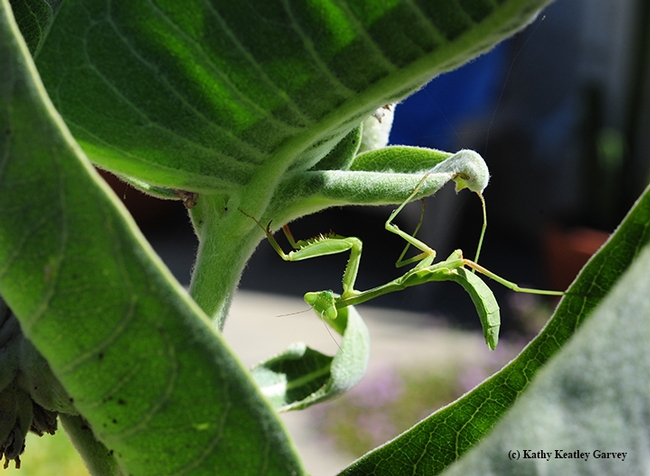
Where's the praying mantis? Look closely on the milkweed and you'll find it. (Photo by Kathy Keatley Garvey)
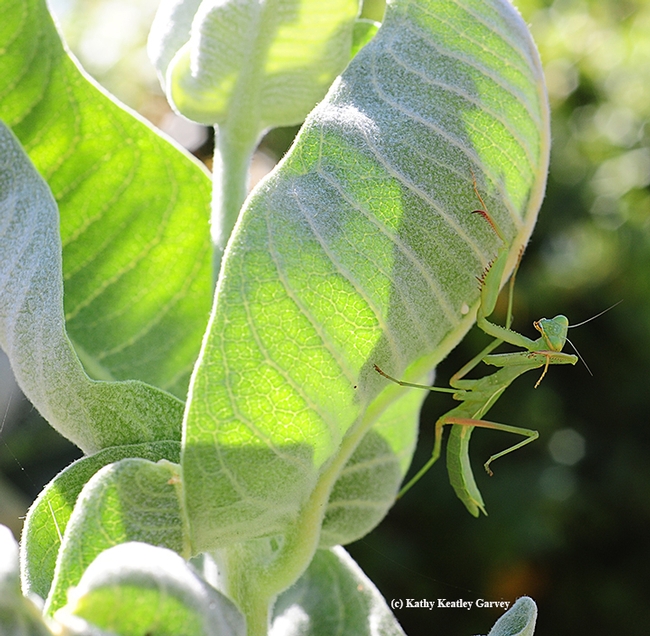
Time to climb. A praying mantis looking for prey on a milkweed. (Photo by Kathy Keatley Garvey)
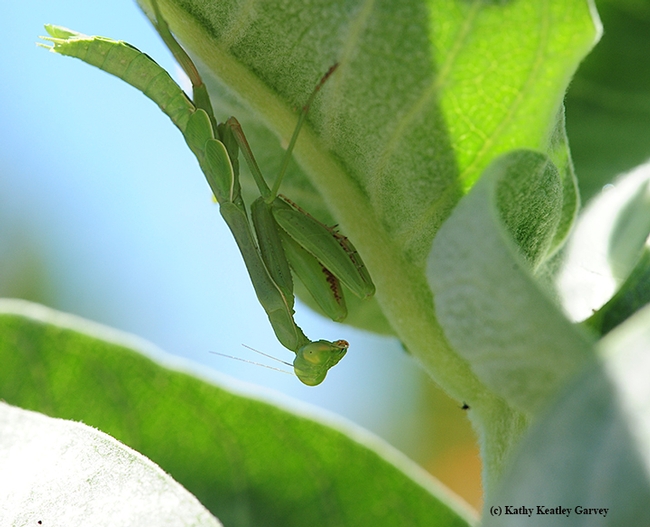
A good spot to hang out. A praying mantis hanging upside down on a milkweed. (Photo by Kathy Keatley Garvey
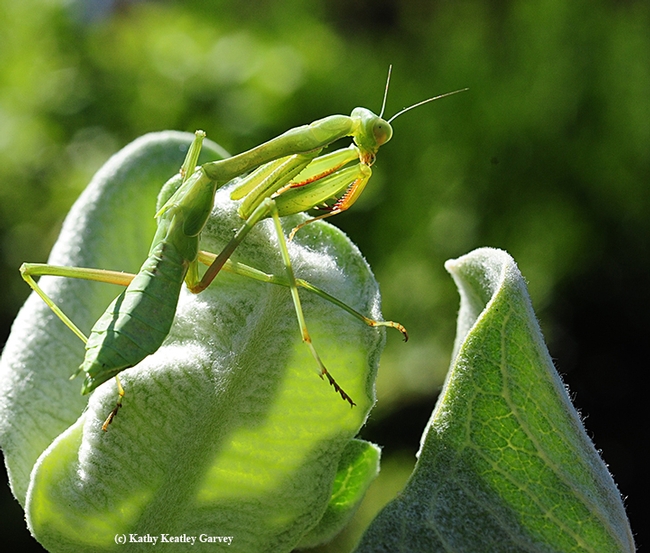
A praying mantis engages in a little grooming as it nears the top of a milkweed. (Photo by Kathy Keatley Garvey)
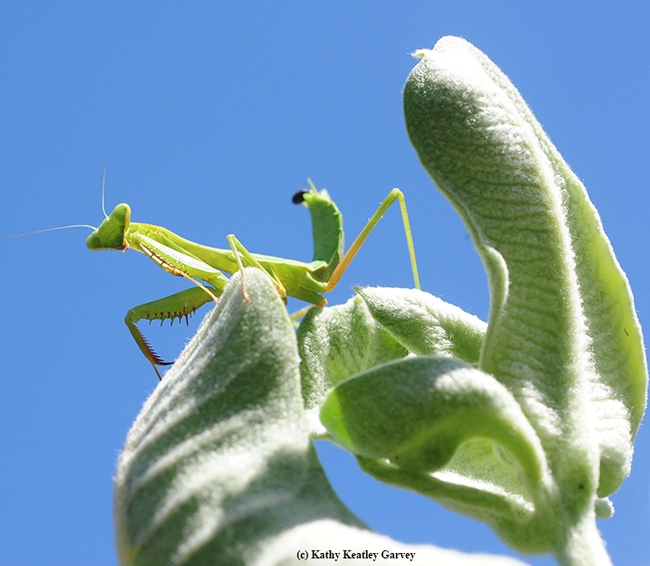
On top of the world--on top of a milkweed. (Photo by Kathy Keatley Garvey)